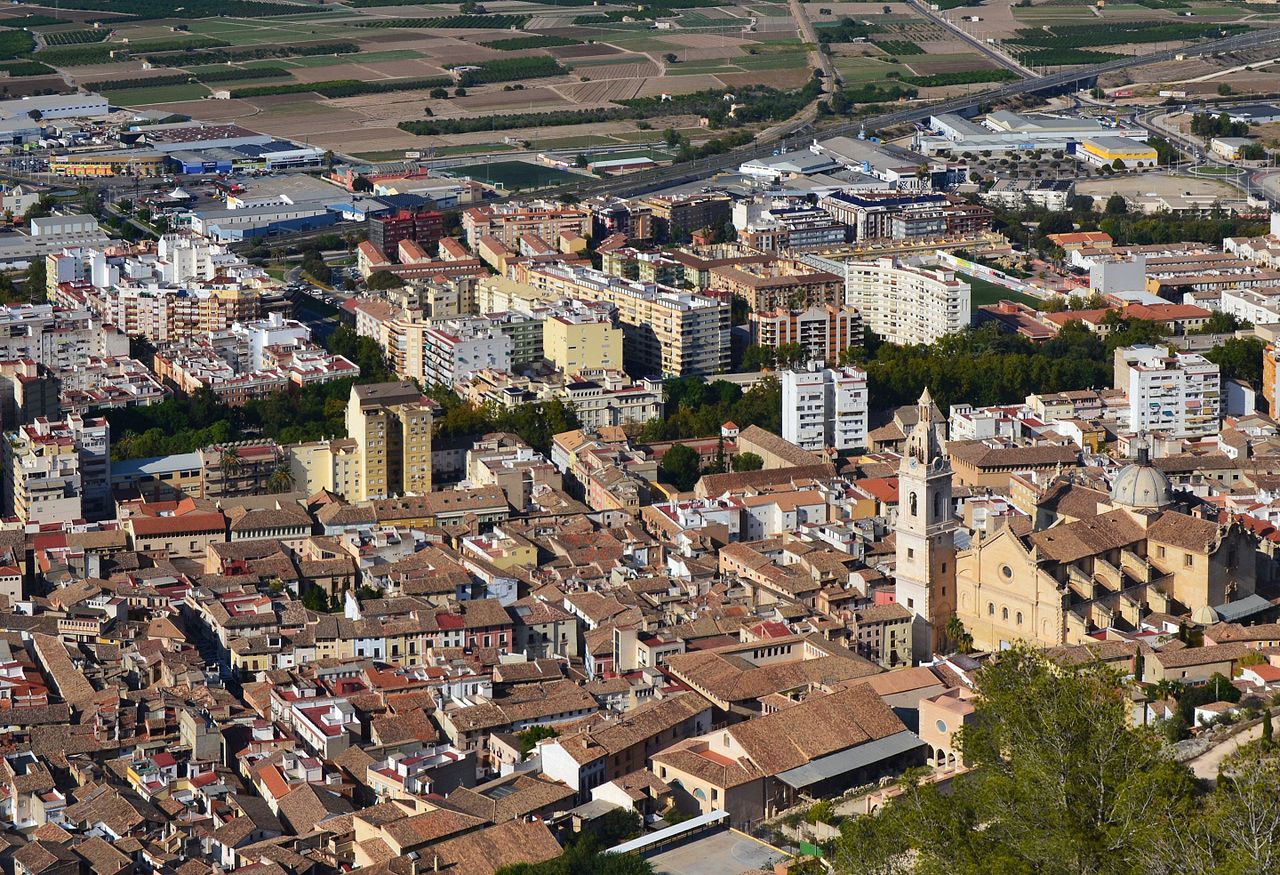
explain to you what to see in Xátiva requires a significant effort of synthesis. Because this town in the province of Valencia, capital of the region of The CosteraIt has a great monumental heritage. It was, historically, one of the most important in the area in Muslim times and even more in the foral period. That is, when the region was an independent kingdom.
In fact, it came to compete with the capital itself and, as if that were not enough, it saw the birth of the Borja or Borgia family, when they Italianized their last name to become popes. Already in the War of succession Spanish was set on fire by order of Philip V, despite which many of these wonderful monuments survived. Thanks to this, we can talk to you at length today about what to see in Xátiva.
The old town, a monumental jewel
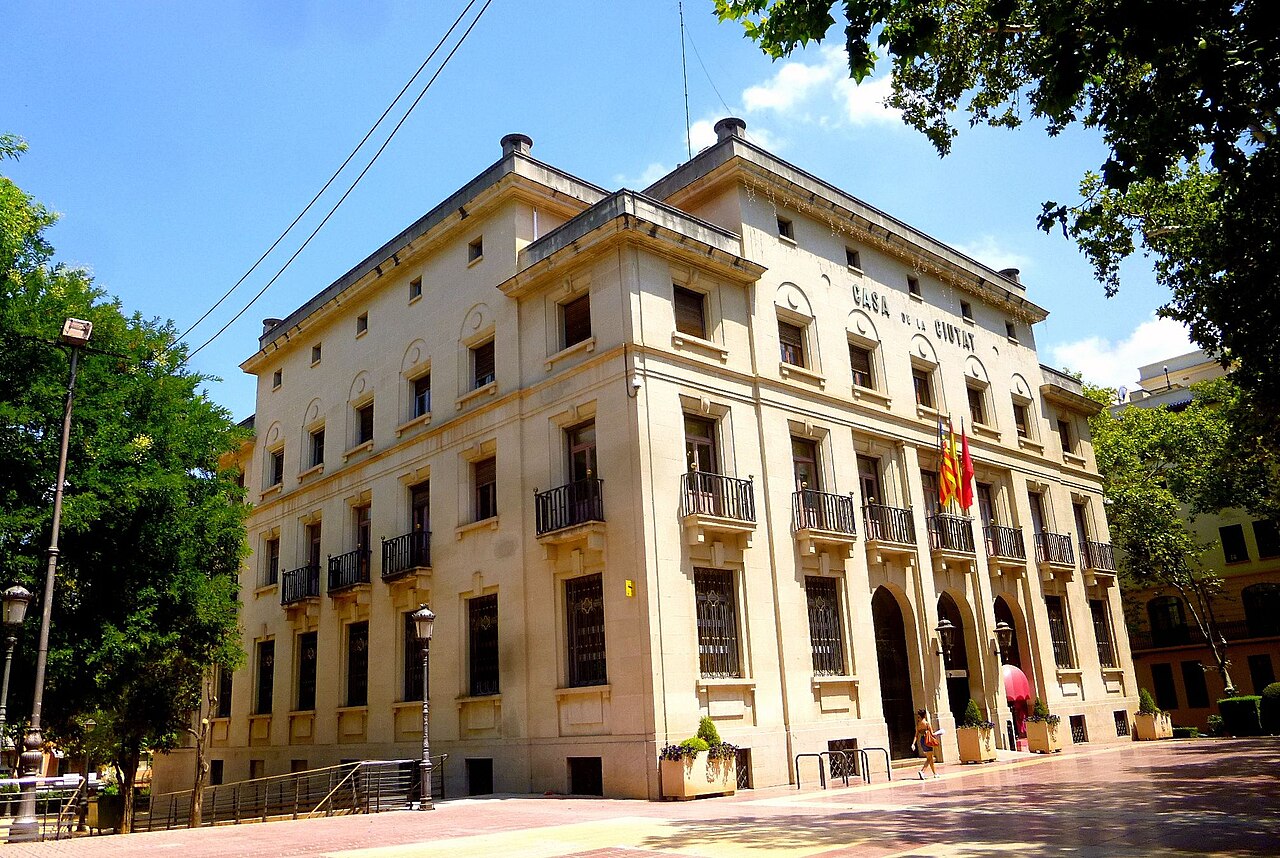
Xátiva Town Hall
The old nucleus of this beautiful town holds the category of Historical artistic complex since 1982. In some places it is framed by remains of the Wall, some dating from the XNUMXth century. Likewise, in the higher areas they include later watchtowers, specifically from the XNUMXth century.
But, above all, the historic center of the Valencian town houses some of its main monuments, those that have made it one of the most visited in the Spanish Levant. We will talk to you about all of them below, but we will anticipate some names so that you can appreciate the monumental magnificence of this beautiful villa. So, we will quote you the Collegiate Church, the Royal Hospital, the church of San Pedro and San Francisco and urban spaces like the Trinity Square.
The castle, the first thing to see in Xátiva
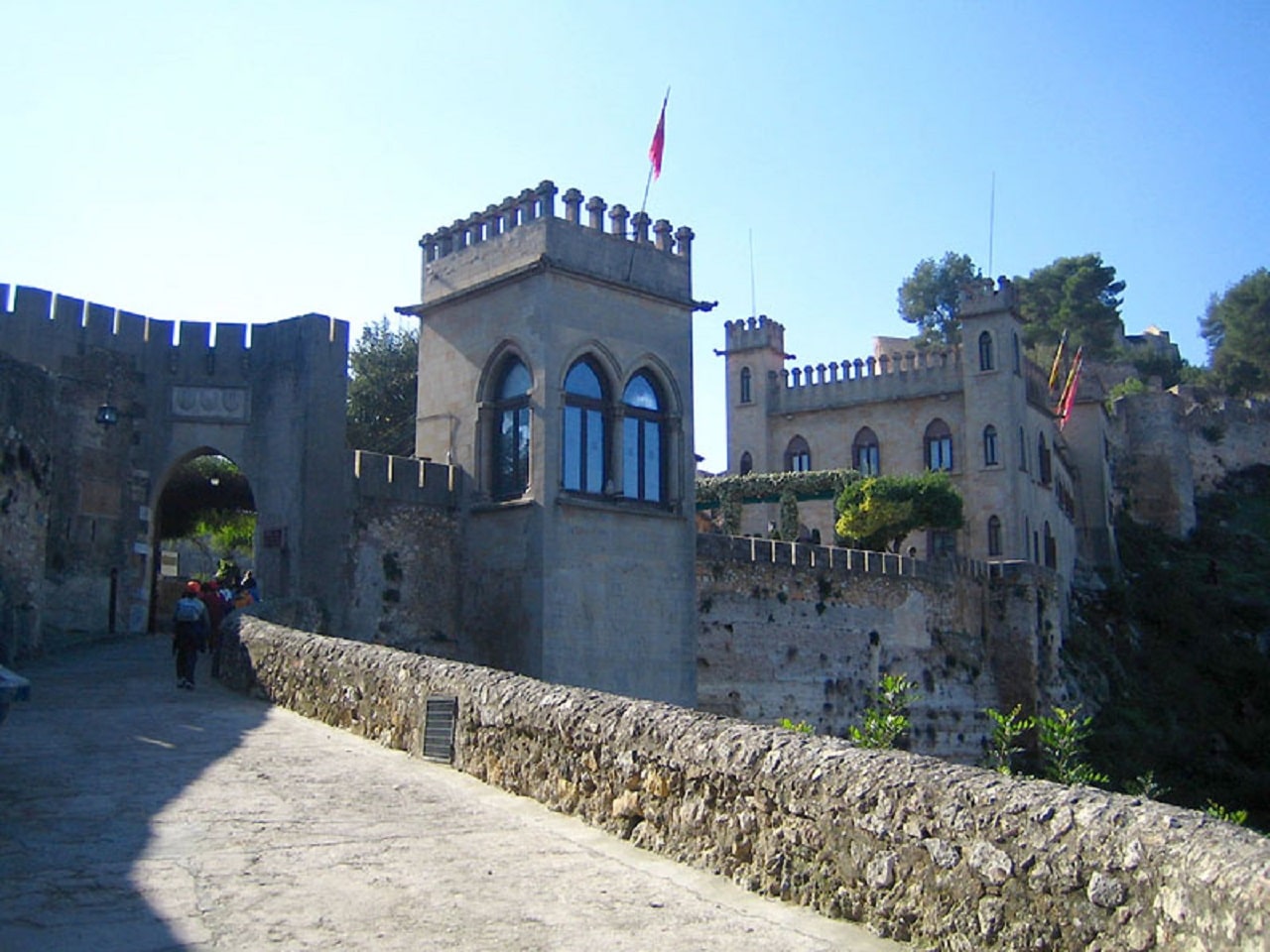
The neo-Gothic part of the castle of Xátiva
However, dominating it from the heights of the sierra vernissa is the castle of Xátiva. From this you have stunning views. On one side is the city itself and on the other the riverside of the Júcar. But you also have the wonderful landscape of the Grossa, Mariola and Benicadell mountains. Even, on clear days, you can see the Mediterranean Sea.
It is a National Monument since 1931 and in it there are two parts. The call Minor Castle It is of Iberian origin and was also inhabited by the Romans. But the highlight is the Major Castle, from the Muslim period, although with Gothic elements added later. In its time, it was considered the most impregnable square in the entire world. Kingdom of Valencia. Already in the XNUMXth century, the Valencian industrialist Gregory Molina he acquired it to add several neo-Gothic constructions. Currently, you can visit the complex from 10 a.m. to 21 p.m. and from Tuesday to Sunday.
The Collegiate Church and other religious monuments
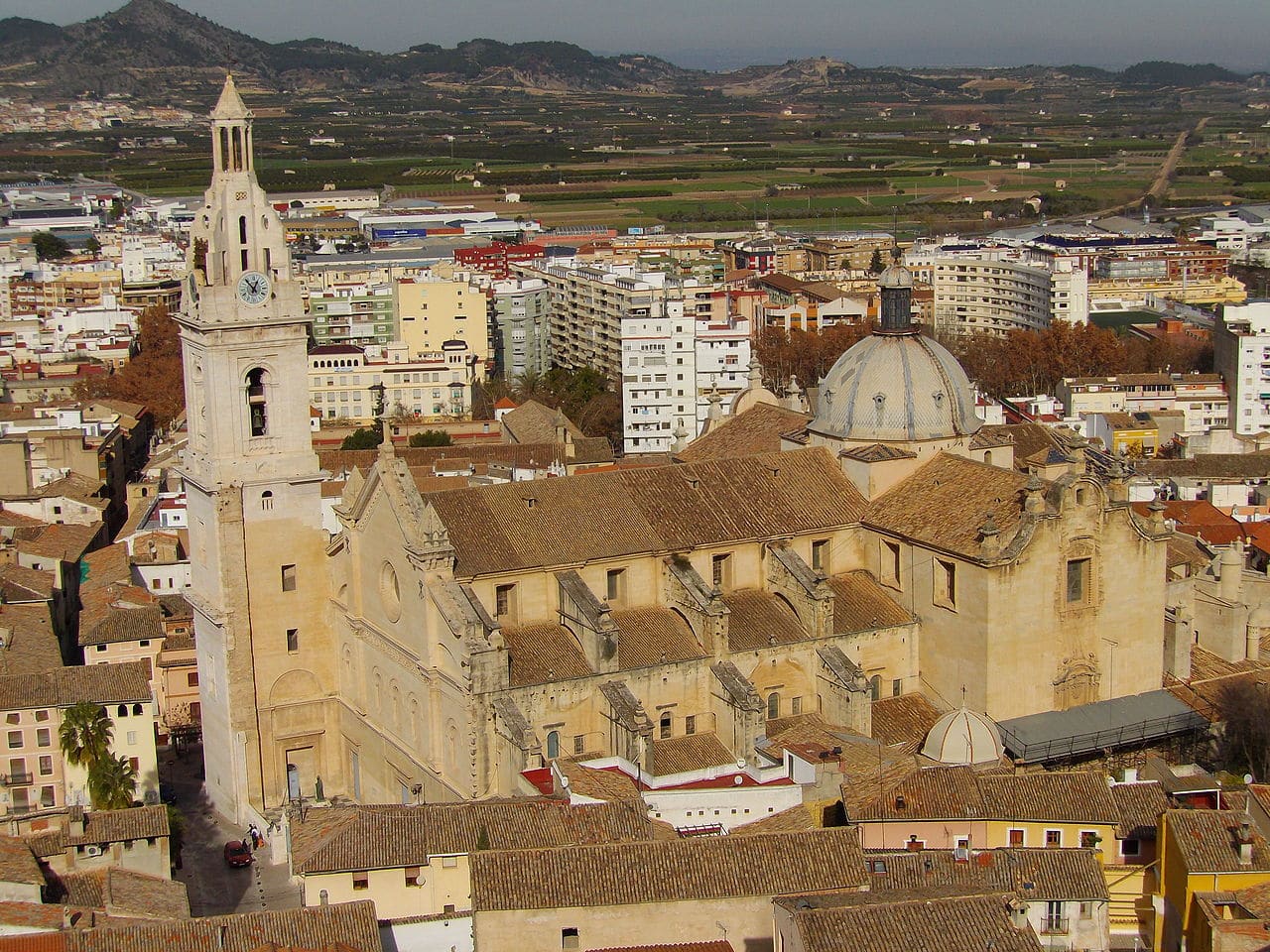
The Collegiate Church, one of the most outstanding monuments to see in Xátiva
Also known as Seo, the Collegiate Basilica of Santa Maria It is the other great emblem of the town along with the previous one. In fact, it has also been a National Monument since 1931. Construction began in 1596, although its construction lasted more than four hundred years. For this reason, it is a sum of architectural styles. However, the elements of inspiration dominate herrerian. In fact, due to its sobriety it is related to the Monastery of El Escorial.
We can tell you the same about its interior, in which the Latin cross plan stands out with an accentuated transept and ambulatory. But, above all, the collection of sacred art that it houses is very important, with various pieces of painting and Gothic goldsmithing. However, logically, it is not the only temple to see in Xátiva. You should also visit the St. Dominic's Church, vestige of an old convent built between the XNUMXth and XNUMXth centuries and which has an interesting Corpus Christi Museum. Also, it's very pretty San Felix church, which is one of the oldest in the entire Valencian Community, as it is dated at the end of the XNUMXth century. It responds to the Gothic style and was built on the remains of the old Visigothic cathedral. It also has an impressive collection of paintings.
Other temples that we recommend you visit in the city are the one in san francisco, near which is the homonymous fountain, a wonder of rococo style; the one of San Pedro, with Mudejar coffered ceiling inside; the one of the Santos Juanes, with a beautiful Buxcarró marble staircase, or the hermitages of Santa Ana and San José. By the way, the latter preserves the door through which, according to tradition, he entered James I of Aragon after conquering the village. As for the first, it responds to the flamboyant Gothic.
Trinity Square

Alarcón Palace in the Plaza de la Trinidad
As we have already told you, it is located in the historic center. In fact, it is its true epicenter. But we make a separate mention of it because it houses some of the best monuments in the town. It is the case of Alarcon Palace, a large manor house from the XNUMXth century in which we will stop later. Also in it was the old convent of the trinity, built in the XNUMXth century and of which only the spectacular Gothic-flamboyant façade of its church is preserved.
Also, in the center of the square you have the homonymous fountain, which is one of the few in the Gothic style that is preserved in our country. It dates back to the XNUMXth century and stands out for its octagonal cup and for the heraldic shields that adorn it. Finally, this place ends the Montcada street, which you should also visit because it includes many of the town's noble palaces. Later we will talk about them.
The Royal Hospital and other civil buildings
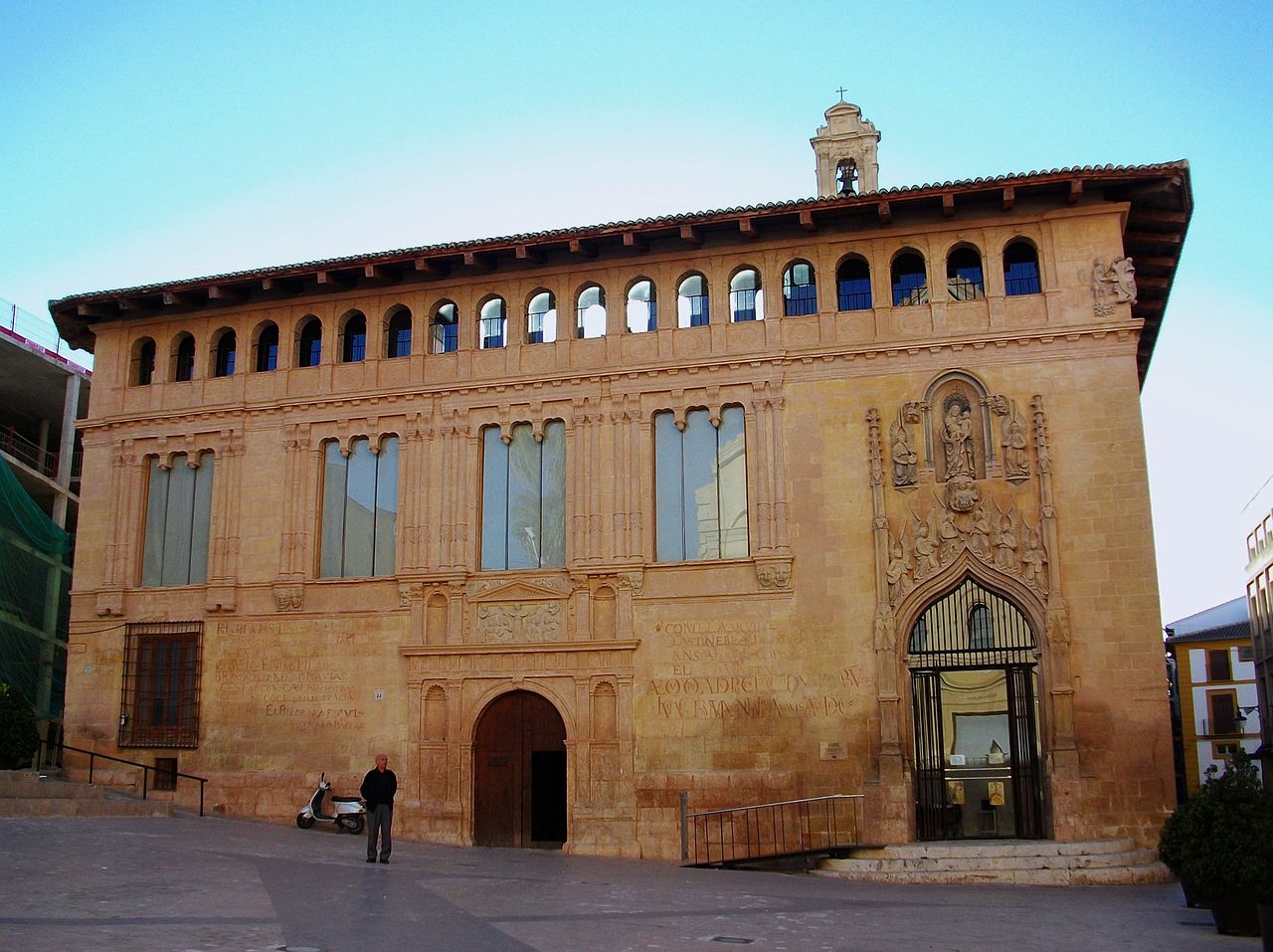
Royal Hospital of Xátiva
Also called Major Hospital for the Poor, is one of the most beautiful buildings in the Valencian town. Its original construction dates from the XNUMXth century, but it was completely rebuilt between the XNUMXth and XNUMXth centuries. In fact, it presents a unique fusion of Gothic and early Renaissance architecture.
Among its construction elements, you should pay attention to the succession of semicircular arches that crown it and that reminiscent of Florentine palaces. But, above all, in the central door, which reproduces a triumphal arch on Doric pilasters and with frieze and pediment. Likewise, the right door stands out, which is adorned with a chronopial arch, flamboyant pinnacles and statues of musical angels that surround the Virgin and Child.
Another marvel to see in Xátiva is the Almudin, a gothic beauty that also includes classicist elements such as the Ionic columns in its inner courtyard. Built in the XNUMXth century, it was the place where wheat was traded. Now, restored, it houses the City Museum. As an anecdote, we will tell you that, among his pieces, there are a portrait of Felipe V placed upside down in punishment for ordering the burning of Xátiva.
For its part, the House of Teaching It is a classicist building from the XNUMXth century that serves as the headquarters of another museum, that of Fine Arts. And the Bottle Building It is completely different, since it is a modernist construction from the beginning of the XNUMXth century. And this leads us to talk about the palaces to see in Xátiva.
Palaces of Xátiva
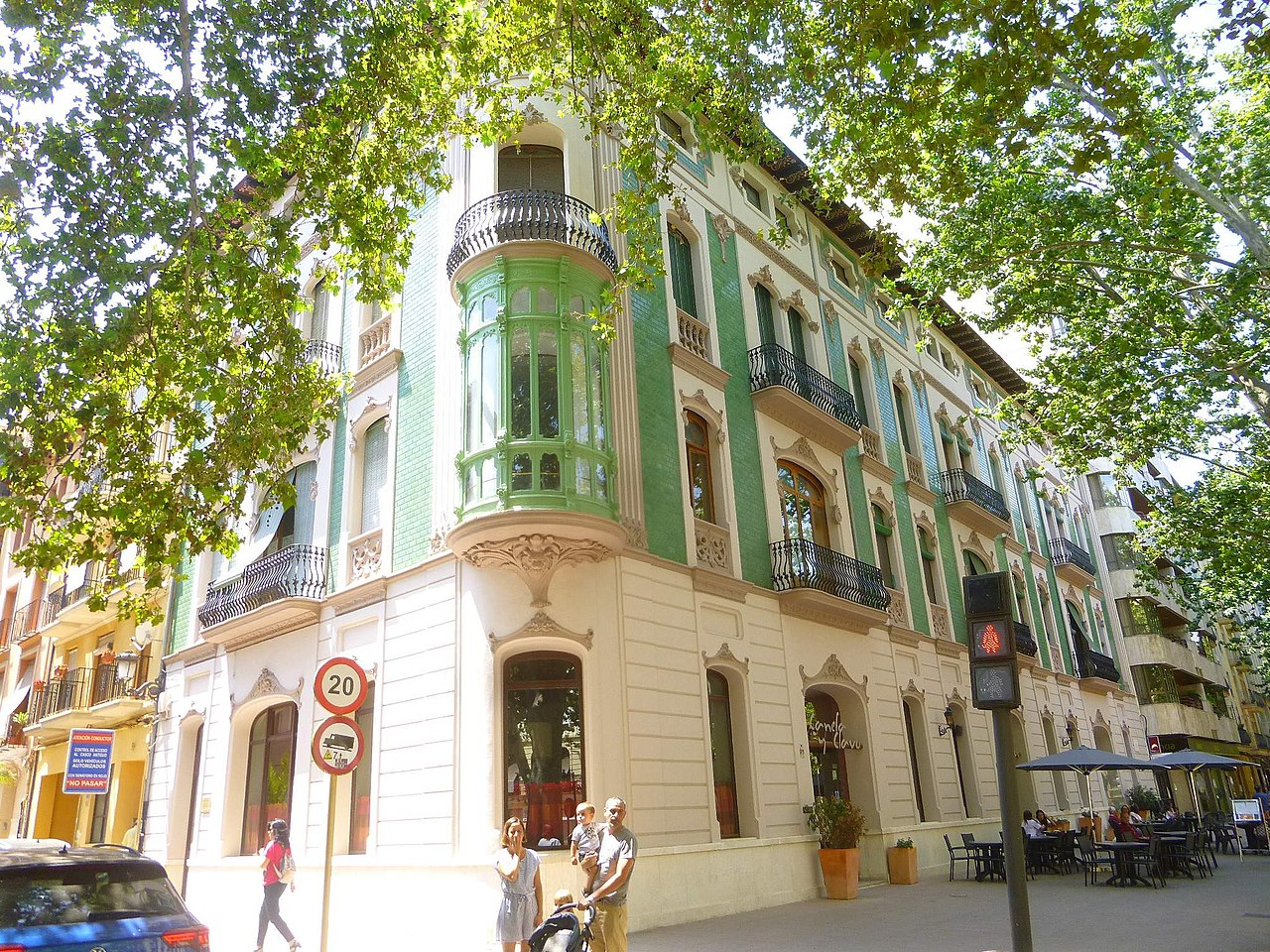
Bottle Building Facade
We have already mentioned the alarcon palace when talking about the Plaza de la Trinidad, but now we will expand the information about it. It was built in the XNUMXth century, although another previous one must have burned during the fire in the city. In any case, it is an architectural marvel, as combines elements of Castilian roots with other ornamentals genuinely typical of the Valencian Baroque. Mainly, these are materials used in ceramics, forging and carpentry. It has a trapezoidal plan to adapt to the location between several streets and consists of four floors, although from the outside it looks like three. Also, inside, the patio with Tuscan columns stands out.
But it is not the only stately building to see in Xátiva. We also advise you to approach the Palace of the Mahíquez Sanz, from the XNUMXth century and currently a house of culture, or at of the Marquis de Montortal, dated in the XV. Also, you can see those of the Archdeacon and the lords of Estubenywhere the queen stayed Isabel II as he passes through the village.
Other monumental beauties to see in Xátiva

The Great Theater of Xátiva
We finish our tour of what to see in Xátiva by talking about some other unique constructions. It is the case of Royal Monastery of the Assumption, which was built in the XNUMXth century and responds to the Gothic canons. However, later reforms added baroque elements. However, part of it has been in ruins since the time of the Civil War.
You should also see the Birthplace of Alexander VI, the famous Rodrigo de Borja who was pope and who, as we have already told you, was a native of the town. However, also in this case, only the doorway with voussoirs remains, the rest belongs to a later construction. In any case, you will find it at number XNUMX of the old Plaza de Aldomar, today, precisely, of Alejandro VI.
Finally, the Great theater It is a modern building of the architect Gerardo Ayala which was inaugurated in 2001. It has avant-garde lines and capacity for eight hundred people. Likewise, it is versatile, since it can host both plays and music, as well as congresses and exhibitions.
In conclusion, we have shown you almost everything what to see in Xátiva. As you have seen, it is a monumental marvel. But you should also savor its delicious gastronomy with dishes such as rice with beans and turnips and desserts like monjavina or almoixávena. Likewise, we want to advise you that you also approach other beautiful towns in the province such as Cullera o Gandia. Go ahead and enjoy all of them.